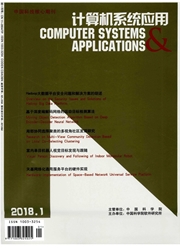

 中文摘要:
中文摘要:
手机本地化在快成长的基于地点的应用程序域起一个关键作用。大多数存在本地化计划依靠象 GSM, Wi-Fi 或 GPS 那样的基础结构支持。在这份报纸,我们现在的 FTrack,在一个活动用户位于哪个造的一块多地板识别地板水平的一个新奇地板本地化系统。仅仅没有任何基础结构支持, FTrack 使用手机传感器。它不要求象地板高度或地板层次那样的大楼的任何优先的知识。通过 crowdsourcing, FTrack 造包含坐电梯 / 自动梯或走在在任何二块地板之间的楼梯上的用户的磁场签名的一张印射的桌子。桌子然后能被用于活动用户指出他们的当前的地板层次。我们进行模拟和领域研究表明 FTrack 的效率,可伸缩性和坚韧性。我们的地试用证明 FTrack 在三座不同大楼里完成超过 96% 的精确性。
 英文摘要:
英文摘要:
Mobile phone localization plays a key role in the fast-growing location-based applications domain. Most of the existing localization schemes rely on infrastructure support such as GSM, Wi-Fi or GPS. In this paper, we present FTrack, a novel floor localization system to identify the floor level in a multi-floor building on which a mobile user is located. FTrack uses the mobile phone's sensors only without any infrastructure support. It does not require any prior knowledge of the building such as floor height or floor levels. Through crowdsourcing, FTrack builds a mapping table which contains the magnetic field signature of users taking the elevator/escalator or walking on the stairs between any two floors. The table can then be used for mobile users to pinpoint their current floor levels. We conduct both simulation and field studies to demonstrate the eiTiciency, scalability and robustness of FTrack. Our field trial shows that FTrack achieves an accuracy of over 96% in three different buildings.
 同期刊论文项目
同期刊论文项目
 同项目期刊论文
同项目期刊论文
 期刊信息
期刊信息
